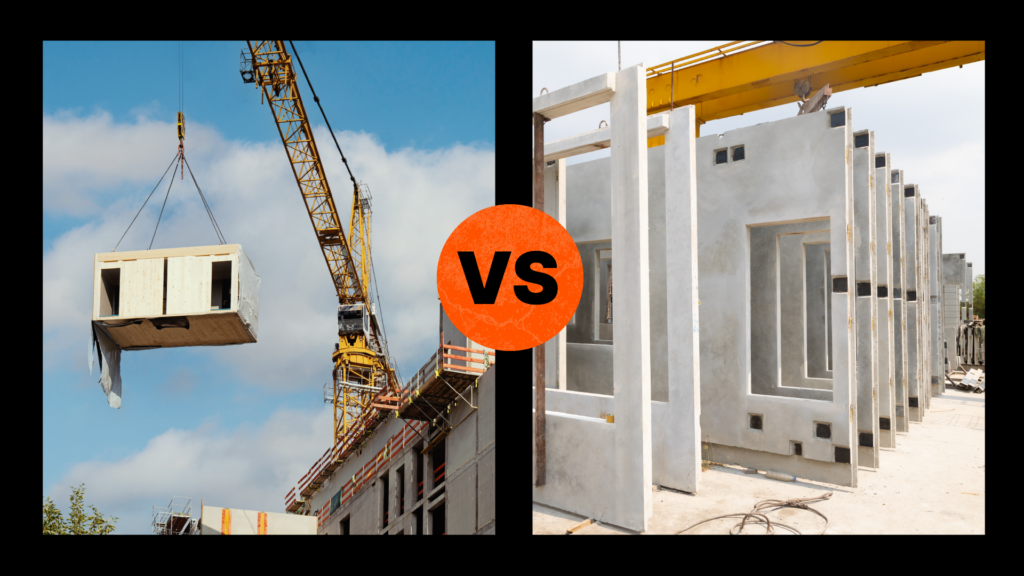— 15 min read
RFPs in Construction: Preparing & Responding to a Request for Proposals
Last Updated Jan 15, 2025
Last Updated Jan 15, 2025

In the construction industry, a Request for Proposals (or RFP) is a document issued by a project owner (typically a business, organization or government agency) to invite potential contractors or vendors to submit proposals for a specific project. At the heart of the contractor procurement process, an RFP acts as a formal invitation extended to contractors to submit comprehensive proposals that outline their project approach, pricing, schedule and qualifications.
Developing a well-crafted RFP is key to a successful construction project as it establishes the fundamental framework for the entire process. By defining the project scope, setting clear expectations and promoting fair competition, an effective RFP ensures a robust and transparent procurement process.
In this article, we explain the different components of construction RFPs, how the RFP process works, and the difference between RFPs, RFQs and RFIs. Whether you’re an owner or contractor, this article offers valuable insights on how to successfully tackle the RFP process to ensure success on your next project.
Table of contents
Construction RFPs: The Basics
Project owners use construction requests for proposals (RFPs) during the bidding process to solicit competitive proposals from contractors for a specific project to evaluate and select the most qualified one for the work. Simultaneously, RFPs afford contractors the chance to demonstrate their qualifications and capabilities and articulate how they would deliver the highest and best value for the project.
An RFP typically consists of a project overview encompassing the scope, technical specifications, timeline and budget. It also includes submission guidelines, evaluation criteria and contractual terms. Together, these components offer vital information and guidelines that enable potential bidders to understand the project requirements, craft their proposals and effectively participate in the procurement process.
RFPs serve as a vital tool for project owners to solicit and evaluate proposals. With this standardized approach to evaluation, owners are able to compare contractors and determine the best fit for their specific project requirements. By using consistent criteria and methodologies, owners can make well-informed decisions and select the contractor that best aligns with their project goals.
Public vs Private Projects
While RFPs are often used to select contractors on both private and public projects, they are commonly issued for larger scale and higher complexity work. This is due to the fact that RFP evaluations typically go beyond pricing considerations. Owners prioritize factors such as approach, adherence to schedule requirements, relevant project experience and other elements that directly impact the overall quality of the construction project.
Government agencies are often legally required to utilize RFPs as a mandated part of the contractor procurement process in order to uphold transparency and foster fair competition. By following this process, they strive to achieve the highest possible quality in the end construction product while staying within the designated budget.
While RFPs are commonly employed by project owners to select general contractors, general contractors themselves frequently utilize them to choose specialty contractors. This is common when the nature of the work necessitates specialized skills and knowledge as well as when there is a strong emphasis on delivering high-quality results.
RFPs are a key component of the procurement and project process, enabling owners to make informed decisions based on objective criteria and select the contractor that best aligns with their objectives.
Information Included in an RFP
In this section, we’ll explore the different components of an RFP including project background, scope of work, technical specifications, evaluation criteria, and submission requirements. By providing a clear framework, these elements enable contractors to comprehend the owner's requirements and effectively respond to them.
Project Overview
An RFP should include a brief introduction to the project, including an overview of the entity issuing the RFP, background on the project, the purpose of the work and the desired outcomes. This section may also include important dates and contact information.
Scope of Work
Defines the tasks, deliverables and project requirements as well as includes specifications and technical details such as architectural plans, engineering design, materials, construction methods and any specific project or site constraints.
Project Schedule
Outlines the estimated timeline for the project, including start and end dates, key milestones and any specific deadlines that need to be met.
Submission Guidelines
The submission guidelines provide information about the format, content and deadline for the proposal submission. It also typically includes guidelines on how to submit the proposal (usually printed or electronic copies), how the proposal should be organized, the number of copies required and any specific forms to be completed.
Evaluation Criteria
The evaluation criteria outlines the criteria that will be used to evaluate the proposals. Usually includes factors such as relevant experience, technical expertise, project approach, cost, schedule and references. Clearly defined evaluation criteria help ensure a fair and objective assessment of proposals.
Contractual Terms and Conditions
The terms and conditions that will govern the construction contract including payment terms, insurance requirements, dispute resolution mechanisms, warranties and other contractual obligations. Contractors are often expected to review and accept these terms or highlight terms and conditions that they would like to discuss if selected as part of their proposal.
Contact Information
Contact details for the individual or team who can be reached for further information or clarifications about the project.
Steps in the RFP Process
While the RFP process in construction may vary depending on project complexity, scope or owner procedures, it usually involves several key steps. These include the following:
- Defining the project
- Developing and publishing the RFP document
- RFP distribution and contractor solicitation
- Contractor proposal preparation
- Contractor proposal submission
- Proposal evaluation and contractor selection
- Contract negotiation and award
1. The owner defines the project details.
The first step of the RFP process sets up the foundation for the entire project. The project owner determines the scope and outlines the project requirements, objectives and constraints. The level of detail in the RFP will depend on the project delivery method that the owner selects for the project.
On a traditional design-bid-build project, the owner hires a design team to define a project in detail by producing drawings and specifications for the project before issuing an RFP to select the main contractor. In this case, the RFP will typically include a bid package with comprehensive details about the scope of work, material requirements, and project schedule.
An RFP issued for a design-build project, on the other hand, typically won’t include the same level of detail, because the contractor who prepares the winning proposal will carry out most of the planning and design for the project.
2. The owner writes and issues the RFP.
The project owner creates the RFP document, which includes a detailed description of the project, technical specifications, evaluation criteria, submission requirements and guidelines, and any contractual terms and conditions.
The RFP should be written to provide potential contractors with all of the necessary information to prepare their proposals. Striking a balance between clarity and flexibility is essential.
On one hand, it is crucial that the RFP eliminates any ambiguity regarding the project's scope and requirements. On the other hand, it should possess a certain degree of flexibility to encourage contractors to propose innovative and efficient solutions.
This aspect is key in the RFP process — the owner should provide sufficient leeway to allow the contractor to exhibit their expertise to produce better project outcomes.
3. The owner publishes and distributes the RFP.
After crafting a clear and concise document, the owner distributes and advertises the RFP.
RFPs are often issued through various channels including public advertisements, industry publications, online portals or directly distributed to known or prequalified contractors.
The objective is to engage competent contractors capable of delivering the project successfully. To achieve this, the owner often uses a dual approach to bid solicitation: widespread public distribution to attract a diverse range of potential contractors and targeted distribution to contractors known for their expertise in the specific project type or market sector. The quantity and caliber of contractors reached determine the success of this step.
Owners often utilize an online contractor directory or marketplace to connect with and search for contractors based on factors such as location, speciality and services. This allows project owners to expand and maintain relationships, leading to improved project outcomes. At the same time, contractors benefit by promoting their businesses, expanding their professional networks and winning more work.
4. Contractors prepare their bids.
Contractors review the RFP in detail, analyze the project requirements and undergo a go/no-go evaluation to determine their ability to successfully deliver the project. If the RFP is determined a go, the contractor proceeds to prepare their proposal.
This entails crafting a comprehensive response that not only satisfies all the criteria outlined in the RFP but also demonstrates why they are the best choice for the project. During this phase, contractors frequently engage in site investigations, cost estimation efforts and consultations with subcontractors or vendors to ensure that their proposal aligns with the project requirements and parameters.
The proposals that stand out as the most competitive will be those that showcase a thorough comprehension of the project, present a detailed technical approach and logistics plan, and emphasize the distinctive qualifications of the contractor.
5. Contractors submit proposals.
Upon completing the proposal, the contractor proceeds to submit it according to the submission guidelines outlined in the RFP. Late or incomplete submissions are often immediately rejected without review. Ensuring the proposal's completeness, professionalism and timely submission is of utmost importance. Contractors are expected to strictly adhere to the submission guidelines, ensuring that the proposal format, necessary information and delivery method precisely comply with the requirements specified in the RFP. Owners typically conduct an initial review of responses to assess completeness and professionalism. If the responses meet these criteria, they proceed to the scoring phase where they are evaluated further.
6. The owner evaluates proposals and selects a contractor.
The owner or an evaluation committee reviews and evaluates all submitted and complete proposals. This evaluation is based on the predetermined criteria outlined in the RFP, such as cost, experience, technical capabilities, past performance and technical approach. The owner may then shortlist or rank proposals and then request additional information or conduct interviews.
Following the evaluation process, the owner awards the project to the contractor that best aligns with the project's requirements and constraints. Establishing a structured evaluation process is crucial for owners, as it allows them not only to select the most suitable candidate but also to provide valuable feedback to unsuccessful bidders in a constructive manner.
7. The owner and contractor negotiate the contract.
After selection, the contractor and owner enter into contract negotiations. The contract terms, including pricing, scope of work, deliverables, payment schedule, timelines and legal requirements, are discussed, refined and finalized.
A successful negotiation process results in a well-understood and mutually agreed-upon contract, setting a positive tone between the two parties for project execution. Once the contract is finalized and all necessary approvals are obtained, the project owner and the selected bidder formally sign the contract, officially awarding the project to the contractor. This signifies the official conclusion of the RFP process and marks the commencement of the actual construction project.
Through clear project goals, thorough evaluation and successful contract negotiation, the RFP process sets the stage for a successful project execution, ensuring that the owner's requirements are met and the project's objectives are achieved.
RFP vs. RFQ vs. RFI
Although RFPs, RFQs, and RFIs may sound similar, they have distinctly different purposes and uses within the construction industry.
| Request for Proposal (RFP) | Request for Qualifications (RFQ) | Request for Information (RFI) | |
| Definition | A formal document issued by the project owner inviting contractors to submit a proposal detailing their approach to a specific construction project and showcase their technical expertise. | A formal document issued by the project owner to gather information about the qualifications, experience, and capabilities of contractors and create a prequalified list for potential future projects. | A document used to collect information that may not be readily available through conventional means. They are frequently employed to clarify uncertainties, request further specifics or suggest alterations to existing information. |
| Flow | Predominantly downstream (from owner to contractors or from general contractors to specialty contractors). However, responses generally flow upstream (from contractors to owner). | Predominantly downstream (from owner to contractors). However, responses generally flow upstream (from contractors to owner). | Bidirectional. While it is most common for RFIs to flow upstream (from contractors to owners or architects), they can also be initiated by owners or sent between various project stakeholders. |
| Phase of Use | Used in preconstruction, specifically during procurement. | Commonly used in preconstruction, before or as part of procurement. | During any phase of the project (design, preconstruction, construction, or even post-construction). |
The Importance of RFPs
RFPs are a critical piece of construction procurement as they facilitate a fair and transparent process for identifying the most qualified contractor for a project. RFPs provide project owners with comprehensive insights into contractors’ qualifications, methodologies and pricing, enabling them to make informed, unbiased decisions, control costs and mitigate risks. This standardized and structured approach promotes collaboration, ensures legal protection and ultimately results in successful project outcomes.
RFPs influence the construction industry and individual projects in the following ways.
Competitive Bidding Environment
By opening up opportunities to a wide pool of contractors, RFPs create a competitive bidding environment. This dynamic incentives contractors to present their most compelling proposals, showcasing their expertise, cost-effectiveness, quality of work and innovative solutions.
The competitive nature of this process motivates contractors to go above and beyond, ultimately benefiting the project owner by maximizing the potential for receiving high-quality, innovative proposals.
Transparent and Fair Process
By clearly stating project requirements and selection criteria, RFPs create a structured and transparent process that creates standardization for bidders. This structured approach ensures standardization for all bidders, promoting accountability and integrity throughout the evaluation process. By providing a level playing field, RFPs enable bidders to compete on a fair and consistent basis, fostering trust and confidence in the overall selection process.
Communication and Collaboration
Through the RFP process, project owners have the opportunity to provide comprehensive information about the project, including its scope, objectives, timeline, budget and any specific requirements. This transparent communication enables bidders to grasp the constraints and intricacies of the project from the beginning.
Contractors are also given the opportunity to ask questions and seek clarification on any unclear pieces in the RFP which facilitates a two-way dialogue between the two parties and minimizes misunderstandings or misinterpretations. This eliminates potential discrepancies between owner expectations and contractor proposals, and facilitates effective collaboration, promotes innovative thinking and enhances the overall quality of proposals.
Risk Mitigation
Through the RFP process, the owner evaluates the bidders' qualifications and past performance and helps them mitigate the risk of selecting an inexperienced or unreliable contractor. Additionally, RFPs provide project owners with the opportunity to review and evaluate the proposed building methods of contractors, allowing for a thorough assessment of their capabilities and suitability for the specific goals and objectives of the project.
By actively managing risk through the RFP process, project owners can make informed decisions that enhance the likelihood of successful project outcomes and minimize the risk of cost overruns or project delays.
Quality Control
By providing detailed information in the RFP regarding objectives and technical specifications, RFPs enable contractors to thoroughly understand the quality requirements of the project. This ensures that contractors are aware of the standards they need to meet and enables project owners to evaluate proposals based on their ability to fulfill the specified quality criteria.
Ultimately, RFPs contribute to maintaining and enforcing quality standards throughout the construction process, resulting in a higher likelihood of achieving the desired standard in the final project deliverables.
Strategic Planning
The RFP process encourages both project owners and potential contractors to engage in thoughtful planning of project execution. When writing an RFP, project owners must thoroughly define and plan the project to ensure clarity in project objectives and requirements.
By aligning their proposals with the project's objectives, contractors tailor their strategies, methodologies and solutions to meet those goals effectively, ensuring that all parties involved are working towards the same outcomes. The strategic planning aspect of the RFP process promotes a comprehensive understanding of the project among all stakeholders, fostering effective collaboration, reducing misunderstandings and promoting a cohesive working relationship.
As a result, contractors submit well-thought-out proposals that reflect a thorough analysis of the project, demonstrate alignment with project goals, and offer innovative solutions. This ultimately leads to superior project outcomes.
The Future of RFPs
As with other aspects of the construction industry and procurement, the RFP process will continue to evolve. The construction industry is witnessing an increasing integration of technology, profoundly influencing the procurement process and will continue to shape its trajectory in the future. The advent of technological advancements has brought about significant transformations, revolutionizing how participants are procured and projects are managed.
This ongoing digital transformation is revolutionizing the RFP process with the adoption of bid management platforms, cloud-based systems and automation tools. These advancements streamline document management, proposal submissions and evaluation processes, helping further enhance efficiency and reduce administrative burdens.
Moreover, this shift fosters improved connectivity between contractors and owners based on specific factors such as technical expertise, market sectors and geographical location, leading to enhanced project outcomes for owners and expanded project opportunities for contractors. The potential for enhanced collaboration is also greater enabling efficient teamwork with real-time communication helping increase productivity.
The RFP process is evolving with the utilization of databases, enabling the incorporation of data analytics and predictive modeling to enhance decision-making. By harnessing historical project data and performance metrics, owners are able to effectively evaluate bidder qualifications, anticipate risks and optimize the selection process for improved outcomes.
As the industry continues to advance, the RFP process will continuously adapt to address the evolving needs and dynamics of the construction landscape. This ongoing advancement will drive increased efficiency, transparency and inclusivity, ultimately leading to superior project outcomes and success.
Was this article helpful?
Thank you for your submission.
92%
8%
You voted that this article was . Was this a mistake? If so, change your vote here.
Scroll less, learn more about construction.
Subscribe to The Blueprint, Procore’s construction newsletter, to get content from industry experts delivered straight to your inbox.
By clicking this button, you agree to our Privacy Notice and Terms of Service.
Categories:
Tags:
Written by
Janine Trinidad
21 articles
Janine Trinidad is a Construction Educational professional for Procore Technologies. In previous roles, Janine managed all phases of construction on hotel, mixed-use, and institutional projects in the San Francisco Bay area. She was responsible for negotiating contract budgets and change orders, managing RFIs and submittals, and overseeing quality control, among other duties. She is also a certified transformational coach with a focus on women-centered and trauma-informed methods. She is passionate about transforming the construction industry to be a healthier, more successful and welcoming place to work and believes technology and education are allies in doing so.
View profileTaylor Riso
73 articles
Taylor Riso is a marketing professional with more than 10 years of experience in the construction industry. Skilled in content development and marketing strategies, she leverages her diverse experience to help professionals in the built environment. She currently resides in Portland, Oregon.
View profileExplore more helpful resources

Mission Critical Construction: Strategies for Success
Mission critical construction involves building structures whose functions cannot afford to fail, as any disruptions can lead to significant consequences for society. Keeping data centers, hospitals, power plants and other...

Modular Construction and MEP: A Collaborative Pairing
In an age of supply chain disruptions, workforce shortages, and rising material costs, off-site construction — including modular construction methods and prefabricated materials — is surfacing as a multipurpose solution....

Connected Construction: Transforming the Industry Through Integration
Construction projects are becoming increasingly complex, so companies need to innovate to accurately and profitably complete these modern structures. Connected construction — using technology and data to improve communication, processes...

Off-Site Construction: Prefab vs. Modular
As the construction world becomes ever more competitive, deadlines get tighter and the margin for error gets slimmer, project owners around the world are always looking for an edge. Thanks...